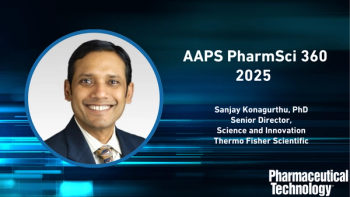
- Pharmaceutical Technology-07-02-2012
- Volume 36
- Issue 7
Report from Europe
EMA and MHRA provide insight into increased GMP deficiencies.
Drug regulatory agencies in Europe are reporting, either in absolute terms or proportionately, rises in deficiencies found in pharmaceutical plants across the world during GMP inspections. The increases seem to be related to the growing number and scope of inspections, although some speculate that the expansion of manufacturing outsourcing, particularly to producers in Asia, also has something to do with it. The most significant rise in deficiencies has been recorded by EMA, which is the centralized authority of medicines in the European Union. In its latest annual report, published in June 2012, EMA revealed that there has been a 38% increase since 2011 in quality defects. These defects are primarily tied to GMPs and other standards such as Good Clinical Practices (GCPs).
The number of quality defects has almost doubled since 2009, going from 80 to 154 in 2011. At the same time, the number of GMP inspections have gone up from 175 to 375 over the three-year period. Inspections have increased to more closely monitor the production of APIs and overall quality at multiproduct sites, where manufacturers are making both finished products and drug substance, according to EMA.
IMAGE SOURCE/GETTY IMAGES
Some of the reported deficiencies have been related to "the increasing numbers of centrally authorized products (and) the inclusion of a basic compliance evaluation of printed packaging material," says an EMA official. The agency has widened the breadth of its compliance checks by including coverage of what it classifies as "minor" issues because such problems could indicate a departure from GMP. "EMA has updated and refined its standard operating procedure (SOPs) for reporting of product defects in 2009 which may be reflected in the absolute numbers of defects subsequently reported," explains a spokesperson for the Association of the British Pharmaceutical Industry (ABPI) in London.
The association also points out that, despite the recent rise in quality defects reported by EMA, there were " fewer product recalls overall—the number of Class 1 recalls, the highest risk category of recall, went down from 14 to 2." Among national regulatory agencies in the EU, a large proportion of whose GMP inspections cover the production of generic drugs and their APIs, there are mounting worries about the rise, either in absolute terms or proportionately, of specific deficiencies. In the latest report on GMP inspections for fiscal year 2011–2012 from the UK Medicines and Healthcare products Regulatory Agency (MHRA), the proportion of "critical" deficiencies or those with a significant risk of causing harm to patients went up from 6.5% of inspections in 2010–2011 to 8.6% this past year.
The agency now has a program directing its inspections at higher risk operations. "As a result, the focus of the inspections in general may change or for higher risk sites the inspection may target certain areas of concern," says Ian Jackson, the MHRA's operations manager and senior GMP inspector.
The list of the agency's Top 10 GMP deficiencies for the past year was again topped by unsatisfactory investigation of anomalies in production. Other categories moving up the deficiency ranks were poor quality management, inappropriate response to complaints, substandard process validation, and unsatisfactory auditing of suppliers. Contamination appeared to be an increasing problem as well with incidents of defective control of microbial contamination doubling. Neither EMA nor MHRA are blaming the current level of GMP defects on the increase in exports of drugs and their active ingredients into the EU from countries, such as India and China.
"There is no evidence that suggests a bias between products manufactured inside or outside the EU," says the EMA official. However, production standards in Asia and in other non-EU areas could become more of an issue next year when the region's new Falsified Medicines Directive, aimed at combating counterfeit medicines, starts to be enforced. This directive requires stepping up GMP inspections of the API production sites supplying Europe, a large proportion of which are based in Asia. National agencies within the EU have already begun to warn pharmaceutical manufacturers that they should not use active ingredients from non-GMP API manufacturers outside the EU. Starting in 2013, EU manufacturers will have to be even more vigilant about the source and quality of their supplies.
—Sean Milmo is a freelance writer based in Essex, UK.
Articles in this issue
over 13 years ago
Requirements for Electronic Records Contained in 21 CFR 211over 13 years ago
Pharmaceutical Technology, July 2012 Issue (PDF)over 13 years ago
A New R&D Paradigmover 13 years ago
Reflecting on 35 Years of Procurement Transformationover 13 years ago
Lyophilization: How to Meet Scale-Up Challenges Using QbDNewsletter
Get the essential updates shaping the future of pharma manufacturing and compliance—subscribe today to Pharmaceutical Technology and never miss a breakthrough.





